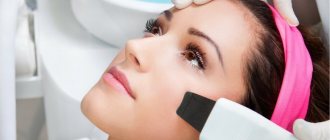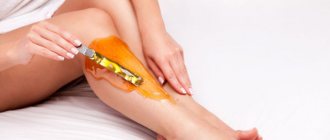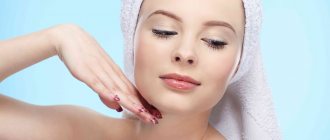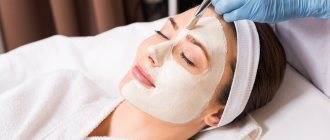Permanent makeup is a procedure in which a specialist introduces special dyes under the upper layer of the epidermis using a professional machine. The result is long-lasting makeup for lips, eyebrows or eyes, which makes the appearance well-groomed and expressive, hides imperfections and age-related changes. This type of tattoo lasts 2-3 years, sometimes longer.
In order for the result to meet expectations, special preparation is needed before permanent makeup. This article contains tips from professional tattoo artists that will help you properly prepare for manipulation, avoid mistakes and get the desired long-term result.
Absolute and relative contraindications for permanent makeup
Tattooing should absolutely not be done if you have a number of diseases. Absolute contraindications:
- acute inflammation in the body;
- oncology;
- poor blood clotting and pathologies of the cardiovascular system;
- AIDS, HIV, syphilis, hepatitis;
- mental disorders;
- epilepsy;
- diabetes;
- somatic diseases;
- keloid scars.
Relative contraindications are only a temporary reason to postpone the procedure. However, pigmentation can be done after eliminating these causes. These include:
- skin diseases in the acute period;
- menstruation;
- pregnancy, lactation;
- viral diseases, infections;
- increased body temperature;
- stress, unstable emotional state;
- taking antibiotics or hormonal drugs, including 1-2 months before the procedure.
General recommendations
First of all, it is important to identify the presence of contraindications. There are quite a lot of cases when you can’t do permanent makeup:
- diabetes;
- acute inflammation;
- impaired blood clotting;
- oncopathology;
- on painkillers or pigments;
- skin diseases;
- serious diseases of the heart and blood vessels;
- tendency to form keloid scars;
- AIDS, HIV, etc.
The procedure is not performed during pregnancy, lactation, while taking antibiotics or during acute respiratory viral infections. Tattooing is not done if there are moles or warts in the pigmentation area. It is worth postponing the introduction of pigment if the day of the visit coincides with your period.
As part of the general preparation of the client for the permanent makeup procedure, it is necessary to:
- Exclude seafood, fatty, heavy, spicy foods from your diet, which reduce the speed of blood flow. This leads to uneven distribution of pigment.
- Refuse coffee on the day of the procedure, and three days before your visit to the studio, avoid alcoholic beverages. Read about the effect of caffeine and alcohol on permanent results here.
- 5-7 days before the tattoo procedure, stop taking medications that thin the blood, as well as antibiotics, corticosteroids, retinoids, anticoagulants, and antidepressants.
- On the day of the procedure, take an antihistamine if there is a risk of allergies.
What and why you should not drink or eat before permanent makeup
Before permanent treatment, you need to adjust your diet. During this period you should not consume:
- Alcohol. A week before permanent makeup, you need to stop drinking alcohol. Alcohol provokes changes in blood pressure, thins the blood, and weakens the immune system. As a result, tattooing causes complications, and damaged tissues heal less well.
- Caffeine. About the same time before permanent makeup, experts recommend stopping drinking coffee and any other drinks with caffeine - tea, energy drinks, Coca-Cola. Caffeine dilates blood vessels and increases bleeding, which is why the technician will not be able to do the job correctly.
- Seafood. Mussels, shrimp, squid and other seafood in the diet affect the speed of lymph flow, provoke bleeding in the presence of injury, and worsen the survival rate of pigment.
- Fatty, spicy, fried foods. Such dishes affect blood flow in a similar way to seafood.
Material and methods
The research was carried out in several directions. At the first stage, as units of analysis, we selected PubMed publications from 1997 to 2022, devoted to complications after tattooing. The analysis categories combined keywords characterizing the occurrence of complications associated with tattooing. The keywords used were words and phrases such as “tattoo”, “tattoo”, “adverse effects”, “complications of tattoo”, “reaction to tattoo”, as well as various diagnoses in combination with the word “tattoo”.
At the same time, we have accumulated a database of patients in the department of laser therapy and other hardware methods of treatment and diagnosis of the Moscow Scientific and Practical Center for Dermatovenereology and Cosmetology with complications after performing the tattoo procedure.
Clinical and laboratory diagnostics included anamnesis, examination, dermatoscopy, allergy tests, bacteriological examination, immunofluorescence tests, enzyme-linked immunosorbent assay, and in some cases a pathomorphological examination of tattoo tissue biopsies was performed. For this purpose, the material was placed in 10% formaldehyde for 24 hours, embedded in paraffin blocks and followed by standard processing, staining of sections with hematoxylin and eosin and Van Gieson. Microphotographs were taken using a Leica DM 100 microscope with a digital camera.
Statistical processing was carried out using methods generally accepted for medical and biological research using the Excel 7.0 (Microsoft, USA) and ARKADA (Dialog-MSU, Russia) software packages.
How to choose the ideal time for the procedure
During the procedure, the integrity of the dermis is compromised, so after tattooing, swelling, redness, and inflammation will appear on the skin. This is a normal reaction, and it will take 2 to 7 days for the skin to restore its healthy state. It is necessary to plan your visit to the studio in such a way as to avoid contact with the environment as much as possible during this acute period. For example, before the weekend or vacation.
If you are planning a trip during your vacation, it is better to get a permanent one a month before the trip or upon your return. During the healing period, you should not be exposed to sunlight - ultraviolet radiation will harm the pigment, weaken its survival rate, and distort the color.
The evolution of permanent makeup
In the past, tattooing was limited to the contour of the lips, and the color of the pigments was noticeably different from the natural shade. The contour turned out to be contrasting, as if the lips were outlined with a pencil, but not painted with lipstick. The result helped in applying makeup, but in itself looked unnatural.
But the demand for the service has not gone away, because girls will always have a request for procedures with which you are confident in your beauty 24 hours a day, anytime and anywhere, regardless of makeup.
The situation has changed: the procedure has developed in techniques, materials and equipment. Indications for permanent lip treatment are as follows:
- Correction of asymmetry or inharmonious shape
- Correcting a blurry, unclear outline
- Visual lip augmentation without fillers
- Adding a luscious tint so your lips don't look pale without makeup
Nowadays it is not customary to do just the contour of the lips, since the effect is too unnatural. The depth of pigment injection is less than 1 mm, the result lasts about 2 years and fades smoothly and imperceptibly as skin cells renew.
The stages of the procedure invariably include cleansing, primary anesthesia, and the procedure itself with the PM apparatus. During the work, secondary anesthesia is often used to reduce the client’s discomfort to a minimum.
How to prepare for eye tattooing
Before pigmenting the eyelashes or the interlash space, you cannot perform cosmetic procedures in this area: laminate eyelashes, curl them or do eyelash extensions. If you already have eyelash extensions, they need to be removed within 2-3 days. When the eyelids have completely healed, the eyelashes can be extended again.
Contact lenses should be removed immediately before the procedure. You will have to give them up in the next few days after tattooing. Also, before visiting the specialist, you will have to remove all decorative cosmetics from your eyes and cleanse your skin.
Lip tattoo: which option to choose
Tattooing is the introduction of hypoallergenic coloring pigments under the skin, providing a natural and clear contour of the lips. The procedure can only be performed in a cosmetic salon that has the appropriate license. Before deciding on permanent makeup, you need to weigh all the advantages and disadvantages, and also familiarize yourself with the options for the procedure. There is also a fashion for tattooing, and the artist must take into account the appearance features of a particular client and her wishes.
Clear contours: for those who love contrasts
Girls trying permanent makeup for the first time usually choose the contour technique. This is the least traumatic procedure; the needle passes along the contour of the lips, introducing paint into the upper layers of the skin. Contouring takes place quickly; a crust remains at the puncture site, which disappears after a few days. To prevent the outline from looking rough, it is important to choose the right paint. It should not differ radically from the natural pigment of the lips. It is desirable for the girl to look natural even without makeup.
The choice of lip color and shape depends on the wishes of the client and the characteristics of her appearance.
A more modern option is contouring with shading. The artist first outlines the lips and then injects a smaller amount of color next to the brighter line, creating a fashionable ombre effect. With this technique, the lips look more voluminous; for natural makeup, it is enough to apply a colorless or slightly tinted gloss on them. Thanks to the blurred technique, the tattoo result lasts longer. Usually correction is required no earlier than after 1.5 years.
Natural makeup
Tattoo artists believe that the time of bright contours is gone. The future lies in more natural options using soft, understated shades and smooth lines. This type of makeup is suitable for adult women; it rejuvenates, hides fine wrinkles and pale lips, allows you to completely abandon decorative cosmetics and always look well-groomed.
Watercolor tattoo. A technique that requires a lot of experience and skill. The pigment is applied in layers, with mandatory shading, a clear outline is not visible. It is recommended to use natural colors, several tones brighter than your own lip pigment. Tattooing allows you to correct congenital or acquired asymmetry, adjust volume, and visually rejuvenate the face.
Filling technique. A complex option that requires great skill from a tattoo specialist. The paint is evenly distributed along the edges of the lips, as a result they look plumper and brighter. The technique is suitable for girls with very light, almost colorless lips.
Natural tattoo. A variation of the contour with shading, which uses natural shades: beige-pink, warm salmon, peach. The lips should not be too bright; this option is suitable for women who do not use rich colors in makeup. the result will last for at least 2 years, but the lips will gradually become lighter after just a few months.
Certified artists use only preparations intended for lip tattooing; regular tattoo pigments are not suitable for this purpose.
It is very important to choose the right paints for permanent makeup. Clients are offered warm and cold shades of various saturations: cherry, coral, strawberry, beige-pink, reddish-pink, lilac, peach. When choosing a color you need to consider:
- general color type of the client;
- shade of skin, hair, eyes, natural lip pigment;
- makeup preferences;
- natural clarity of contours.
Typically, artists use different colors to contour and fill the main volume. To make your mouth look more prominent, you should choose a slightly darker shade for outline.
Usually, discomfort is relieved with an anesthetic ointment, but in some cases painkilling injections are possible.
How to prepare for lip tattooing
Before permanent lip makeup, you should adhere to the following reminder:
- cleanse the skin of your lips using scrubs in a week;
- use nourishing creams, balms, cosmetic oils to soften the skin;
- protect the skin from wind and temperature changes using hygienic lipsticks;
- carry out preventive antiherpes therapy, which we mentioned above.
Popular types and techniques of PM lips
Among permanent lip makeup techniques, non-contour watercolor and lipstick are in high demand. This is a way to add color, expressiveness, and brightness to your lips - the master evenly fills the entire volume of the lips, and not just the contour.
The skin of the lips is injured by a thin needle, and pigment is introduced under the upper layer of the epidermis. With proper selection of shades, taking into account the color scheme and color type, experienced craftsmen manage to achieve a shade that looks balanced and natural in watercolor techniques - those around them will not even understand that the girl is wearing a permanent hair dye. The peculiarity of this technique is also that the contour is not accentuated, and the pigment is distributed by soft spraying.
The lipstick technique gives a dense and rich filling of color and a distinct tone-on-tone contour, or a little lighter to slightly soften its outline.
What happens if you don’t prepare for the procedure?
Proper preparation largely determines the quality and durability of pigmentation. No master will be able to achieve an impeccable result if the client did not follow the recommendations and violated prohibitions: drank alcoholic beverages and coffee, did not adhere to a diet, sunbathed, or did not take herpes prevention.
If improperly prepared, the pigment may not take root, and after the crusts come off, it may change color or become deformed. In addition, the procedure will be more painful, and the rehabilitation period will at least double. As a result, damage will be caused to health, appearance and wallet.
How to care for permanent hair
To quickly restore the injured area and improve the result, for 7-14 days after the procedure you should not:
- wet the pigmented area;
- tear off scabs, comb the skin;
- go to the solarium, sauna, bathhouse, swimming pool;
- sunbathing;
- use decorative or skincare cosmetics.
Injured skin should be treated with antiseptics and wound healing agents, and lubricated with moisturizer. The master will provide detailed recommendations for caring for the permanent.
Color selection
From the before and after photographs of permanent lip makeup, you can see how the procedure can transform your appearance, disguise imperfections and balance your shape. With minimal intervention (only dye, no artificial fillers), lips look seductively voluminous, symmetrical, and healthy in color.
The choice of pigment color depends on the client’s color type, wishes and goals. Some come for the most natural result, and their goal is to correct the shape and contour of the lips, to disguise a scar or pigmentation around them. Others are dissatisfied with the pallor of their lips and want to add richness and expressiveness. At the same time, too saturated, dark, unnatural colors are not used in the permanent lips.
If the client does not like the color immediately after the procedure, or if for some reason the client no longer likes the result, a correction can be made or the permanent removed using a remover. This is a lactic acid-based drug that pushes pigment from the layers of the epidermis to the surface of the skin.
Answers to frequently asked questions
- Do I need to choose the pigment application technique myself before tattooing my eyebrows?
You need to decide on the desired result; you can also choose a photo of the eyebrows you like. It is better to select the final pigmentation technique and dye color together with the specialist at a preliminary consultation. A specialist will help you choose the best approach, taking into account the structure of your eyebrows, appearance, color type, and wishes.
- Is it possible to tattoo lips if there are peelings on the skin?
The pigment should lie on smooth, moisturized skin without peeling, cracks or wounds. You cannot tattoo on unprepared skin, as the pigment will be distributed unevenly and will not take root. Proper preparation will help remove peeling: using scrubs and moisturizing balms for a week before the procedure.
- Do I need to take painkillers before getting a tattoo?
No no need.
The specialist applies a local anesthetic in the form of a gel or cream, which acts on the pigmented area, reduces sensitivity and makes the procedure as comfortable as possible. Share link:
About the master
– Carla, how long have you been working in the permanent makeup industry?
What do you specialize in and where do you currently practice? – I have been in the industry for 5 years and specialize in modern PMU-Natural Effect lips, dark lip neutralization, eyeliner and eyebrows. I have three studios: two in New York and one in Miami, where my academy is also located, which trains not only beginners, but also experienced professionals.
Our courses are based on working with different skin types. Our clients from all over the world include people with high melanin levels. And the service to neutralize dark lips is popular.
Work by Sculpted Studios. Neutralizing dark lips
“The more hydrated and smooth the client’s lips are during the procedure, the better the results will be.”











